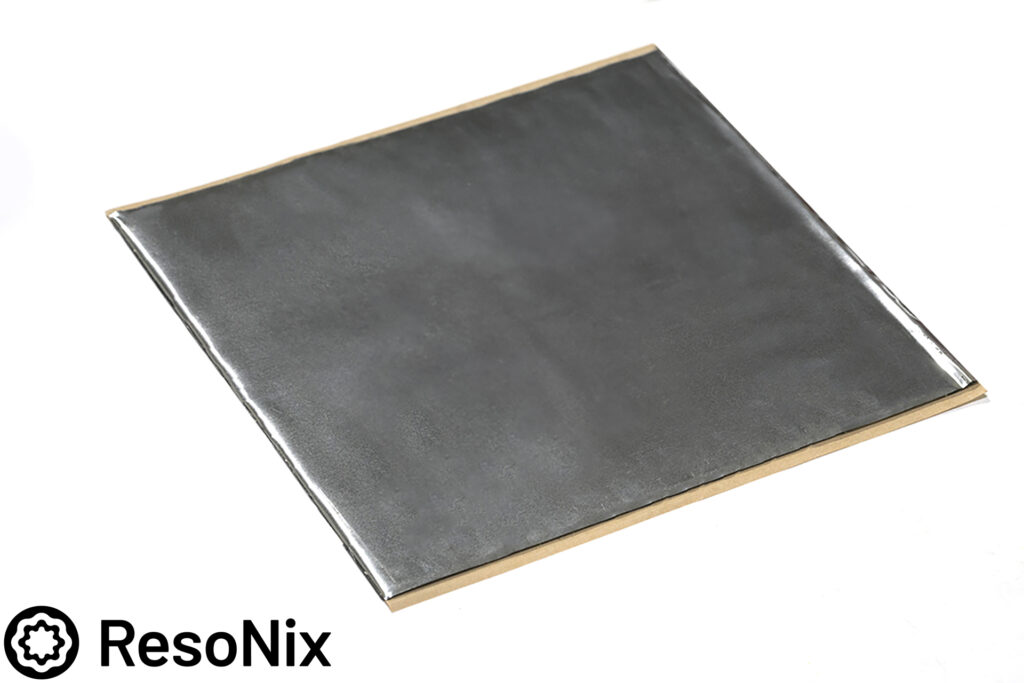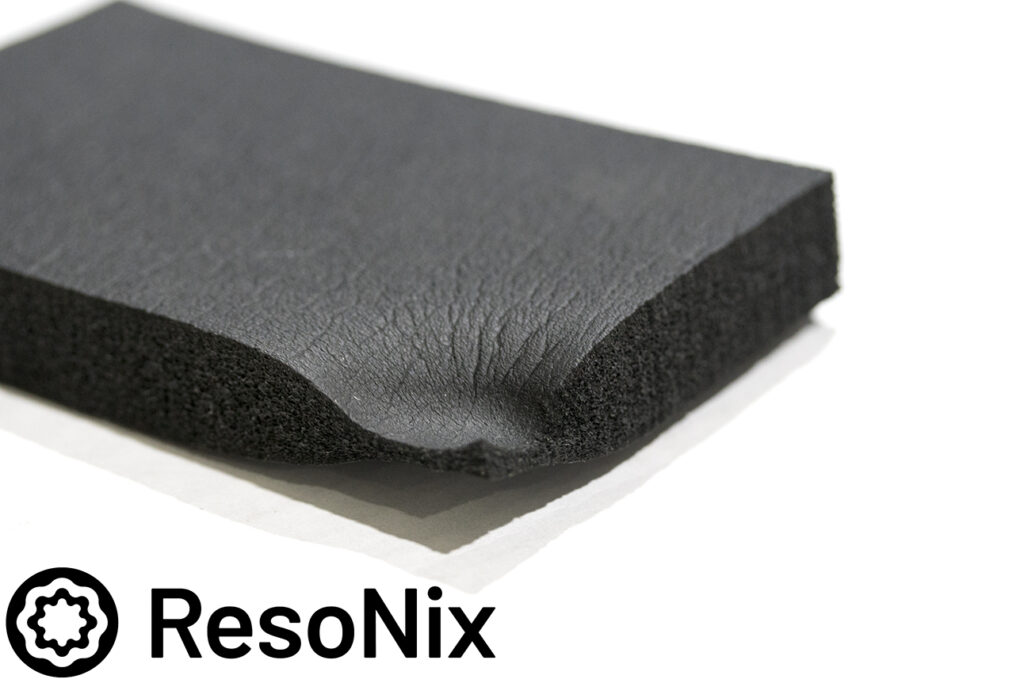2017 Honda Accord Sound Deadening
For this Tenth Generation 2018 Honda Accord, we did a basic sound system and did a Stage 1 sound treatment package on the doors. Here is what we did.
Products used:
- CLD Squares: 12
- CLD Rectangles: 4
- FD2: 1 yard
- Butyl Rope: 4 feet
First step is to remove the door panel
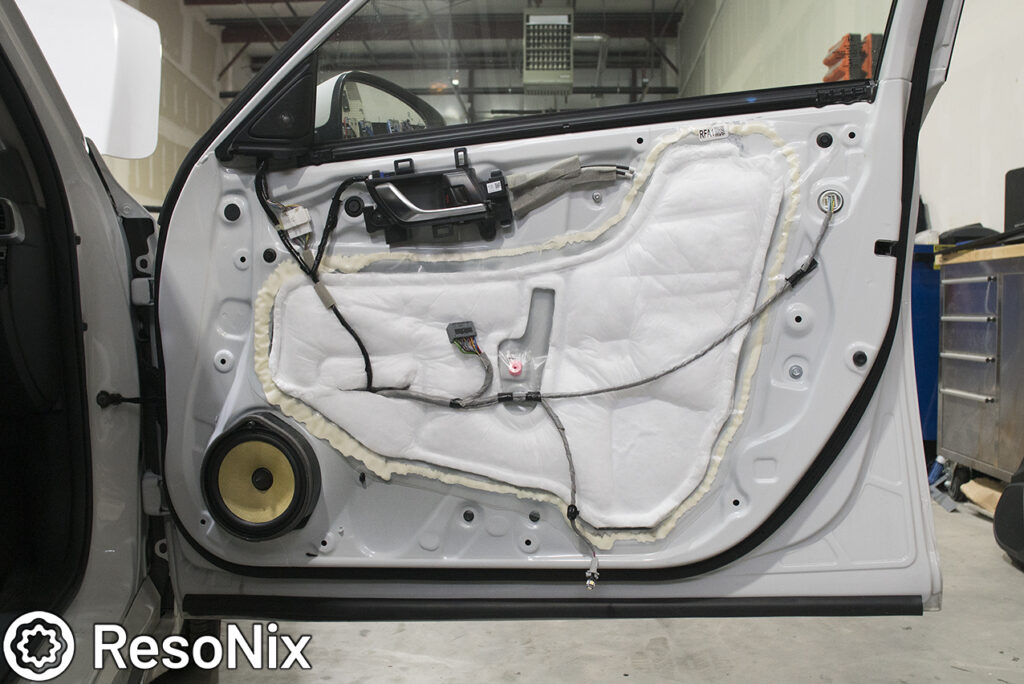
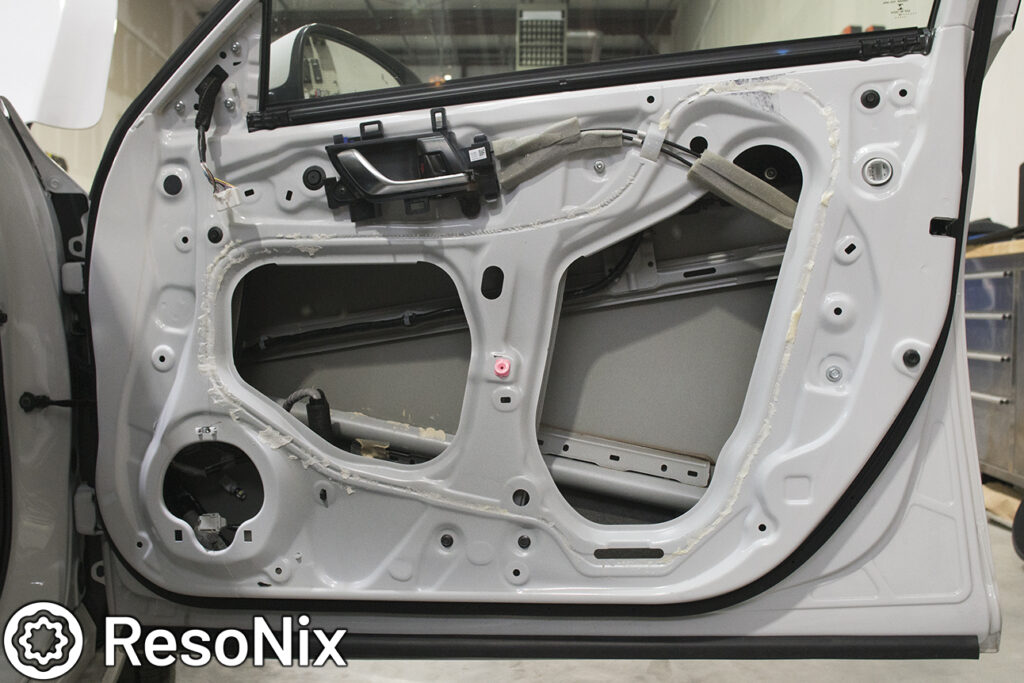
Door panel removed and the OEM fiber mat and moisture barrier removed, and wire harness tucked out of the way. Here you can see the outer door skin exposed, along with the two support bars.
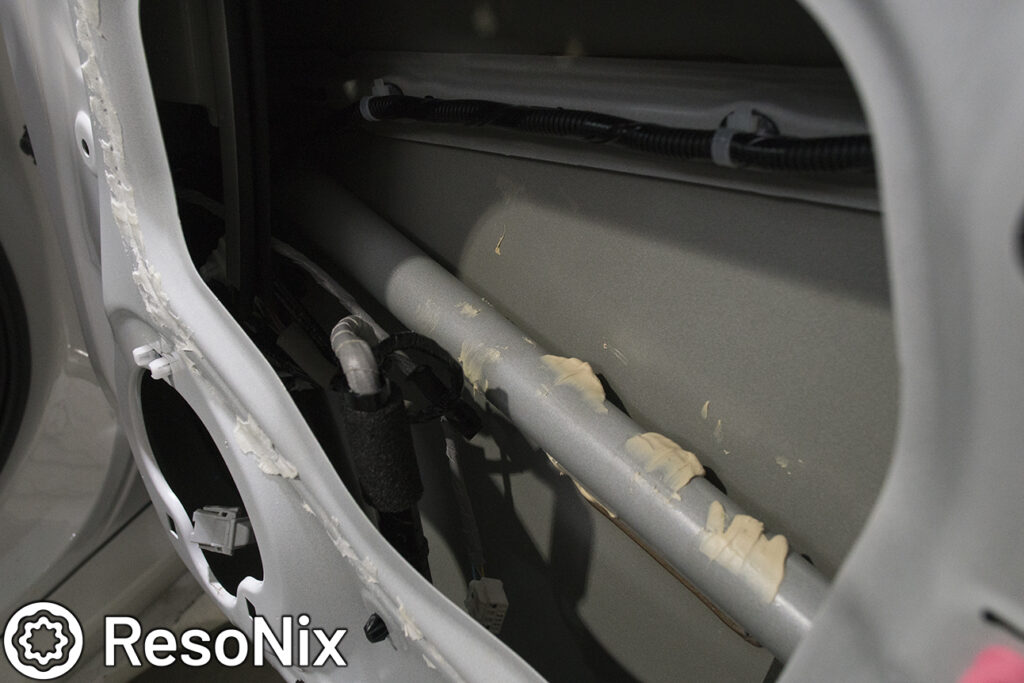
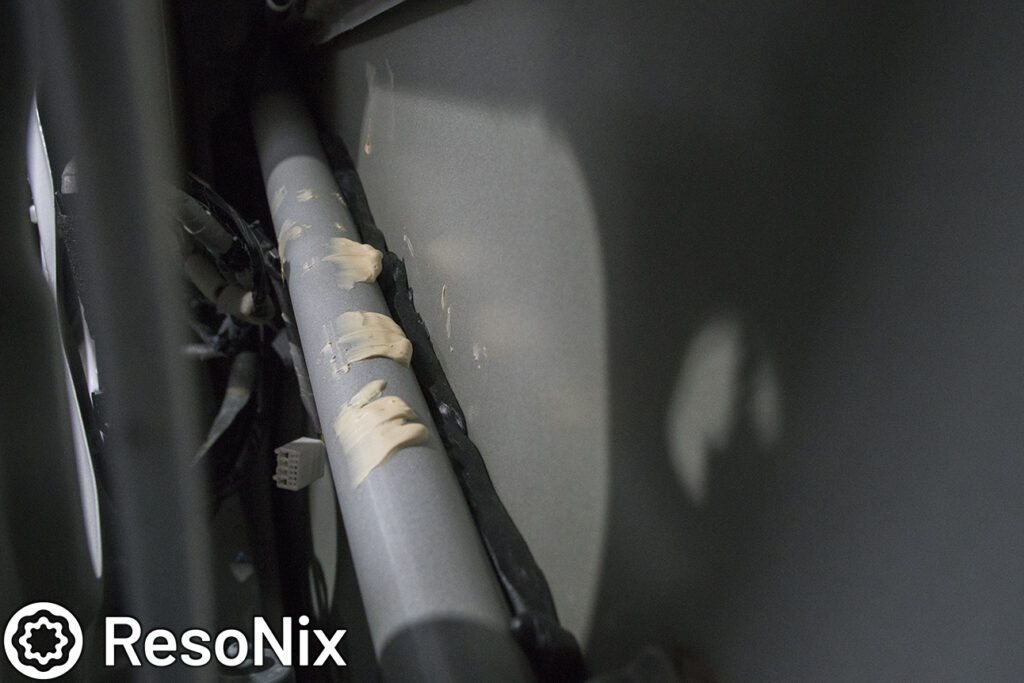
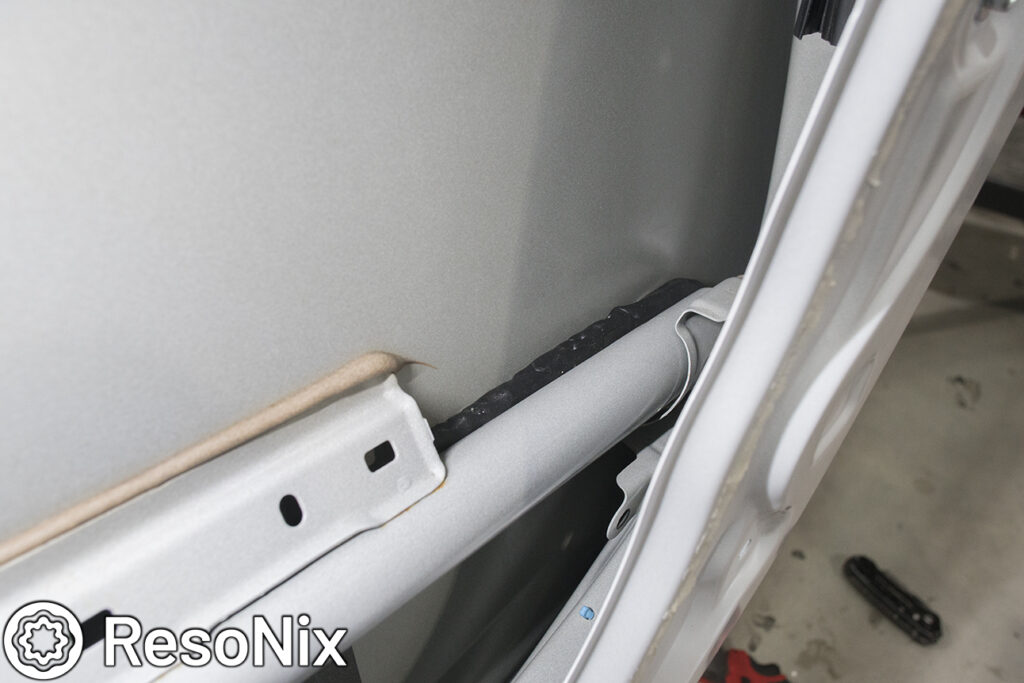
Here you can see how we used butyl rope in between the crash bar and outer door skin in this 2018 Honda Accord front door.
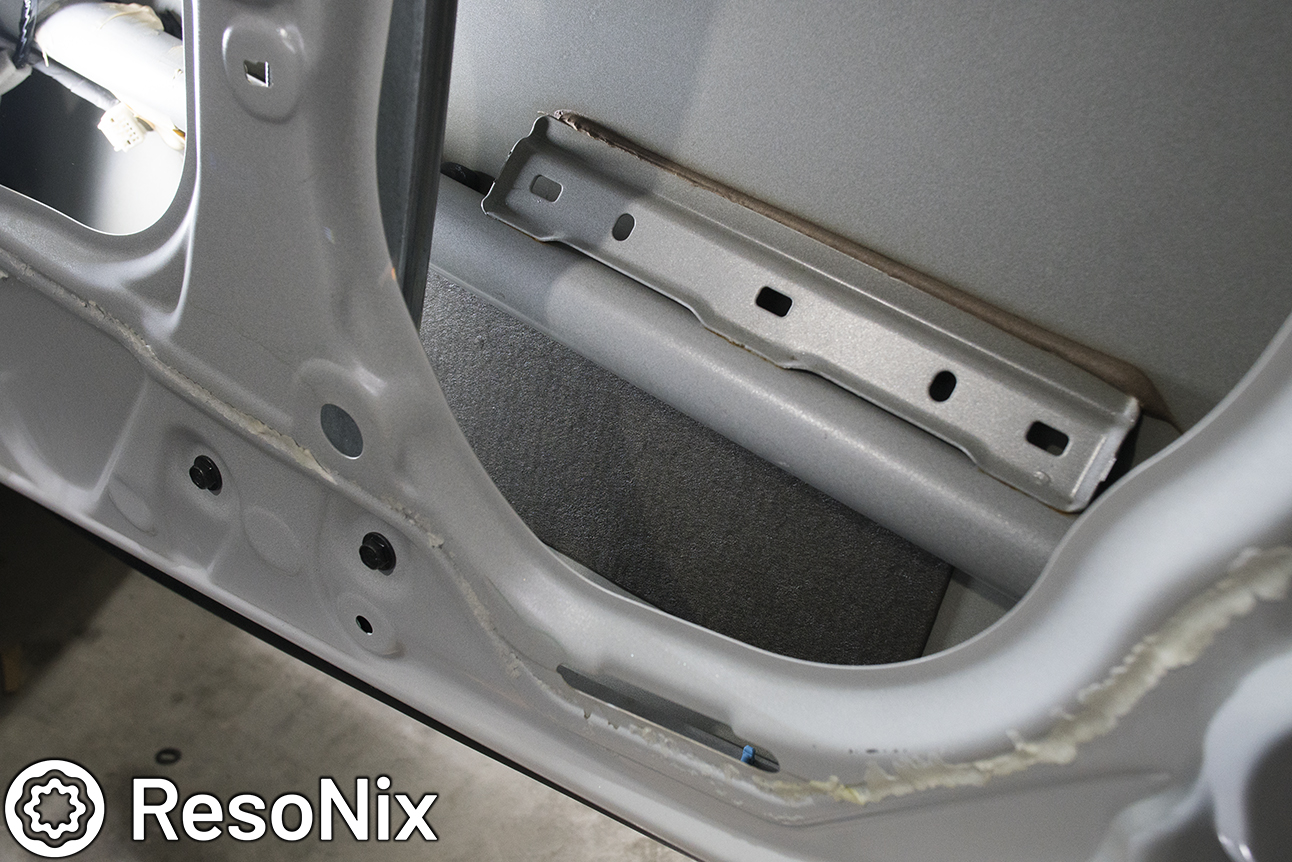
Here you can see the cars OEM damping material. It is usually not worth the time and effort to remove it. Either leave it as is and work around it, or dampen over it.
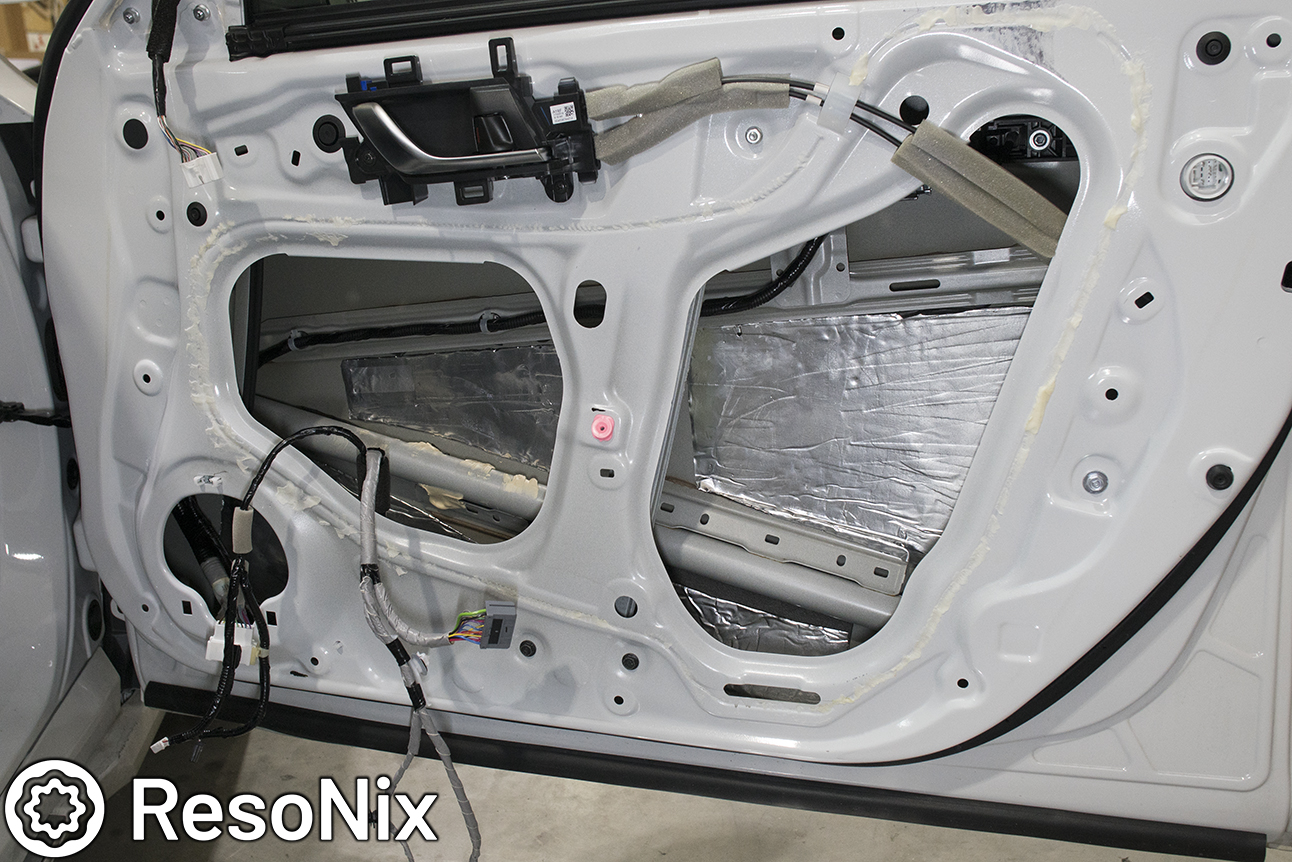
A healthy amount of ResoNix Squares was applied to the outer skin.
After the outer door skin is finished, let’s move onto the inner door skin. The inner door skins can be a bit unpredictable from vehicle to vehicle. Outer door skins are pretty much always long and flat. Inner door skins, not the case. Some are flat and easy to work with, some have a bunch of curves and bends in the sheet metal, some have wires all over them, and most have large holes in them as well. Some are even made out of plastic or composite materials. If they are large and flat with not much natural damping, stick to the ResoNix Squares. If not, some more careful thought and planning should go into it. If the panel is already naturally damped (knock on it with your finger. Does it resonate or is it solid?) If it already has some form of natural damping due to its shape and curvature, stick to ResoNix Rectangles unless you are after the absolute best performance regardless of price. Just know that diminishing returns do exist. Again, use the largest pieces you can. It’s better to have one large piece as opposed to multiple smaller pieces that cover equal, or even more surface area. The largest problem with inner door skins is the large holes that are there to service anything inside of the door. For optimal midbass performance, we need to do our best job at sealing these holes to prevent cancellation from the rear wave of the speaker interacting with the front. If the holes are large (over 1 square foot or so), its probably best to use something hard like acrylic, fiberglass, abs, etc. to seal up the holes and use a CLD over them. If the hole is on the small side, it is perfectly fine to use a CLD over the hole to seal it.
After the outer door skin is finished, let’s move onto the inner door skin. The inner door skins can be a bit unpredictable from vehicle to vehicle. Outer door skins are pretty much always long and flat. Inner door skins, not the case. Some are flat and easy to work with, some have a bunch of curves and bends in the sheet metal, some have wires all over them, and most have large holes in them as well. Some are even made out of plastic or composite materials. If they are large and flat with not much natural damping, stick to the ResoNix Squares. If not, some more careful thought and planning should go into it. If the panel is already naturally damped (knock on it with your finger. Does it resonate or is it solid?) If it already has some form of natural damping due to its shape and curvature, stick to ResoNix Rectangles unless you are after the absolute best performance regardless of price. Just know that diminishing returns do exist. Again, use the largest pieces you can. It’s better to have one large piece as opposed to multiple smaller pieces that cover equal, or even more surface area. The largest problem with inner door skins is the large holes that are there to service anything inside of the door. For optimal midbass performance, we need to do our best job at sealing these holes to prevent cancellation from the rear wave of the speaker interacting with the front. If the holes are large (over 1 square foot or so), its probably best to use something hard like acrylic, fiberglass, abs, etc. to seal up the holes and use a CLD over them. If the hole is on the small side, it is perfectly fine to use a CLD over the hole to seal it.
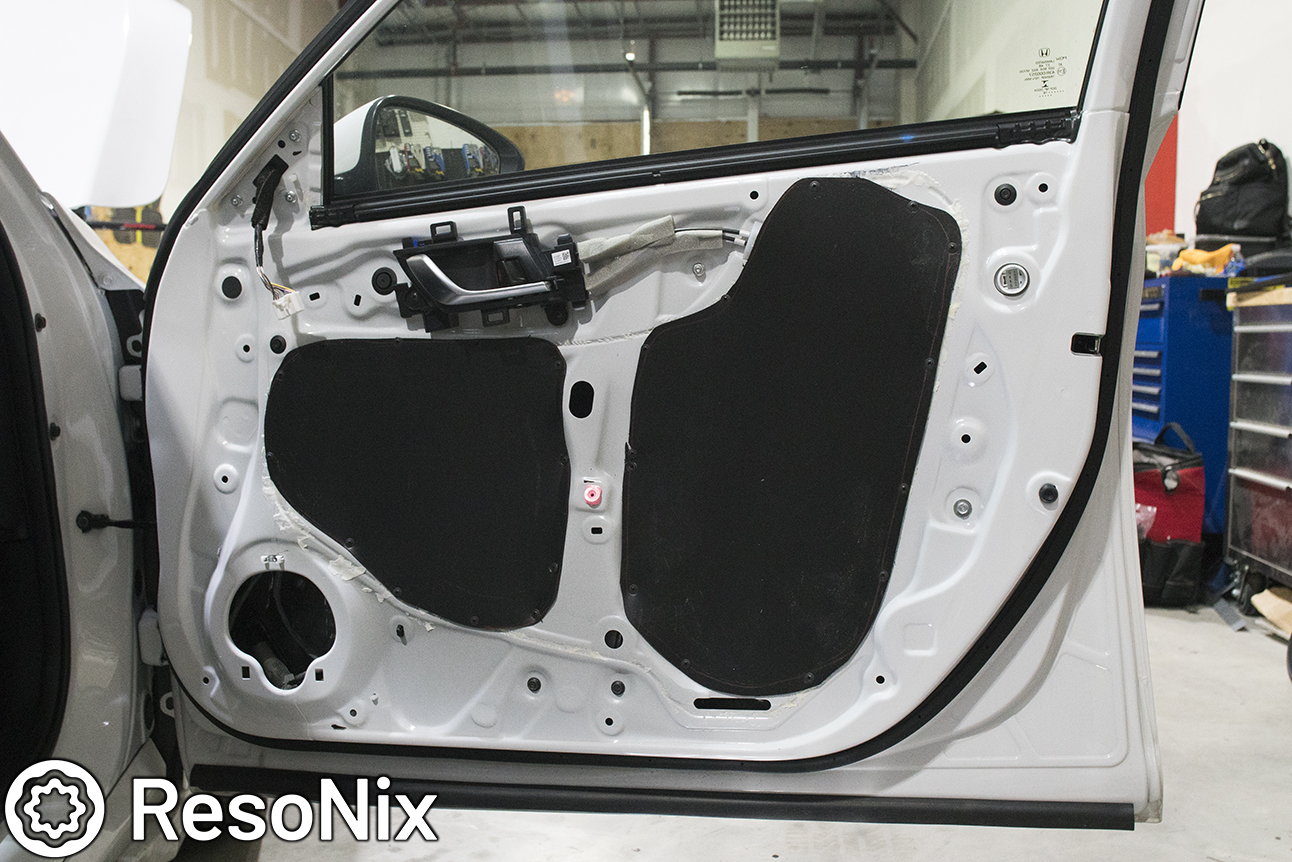
The two large holes were sealed with 3/16” ABS plastic.
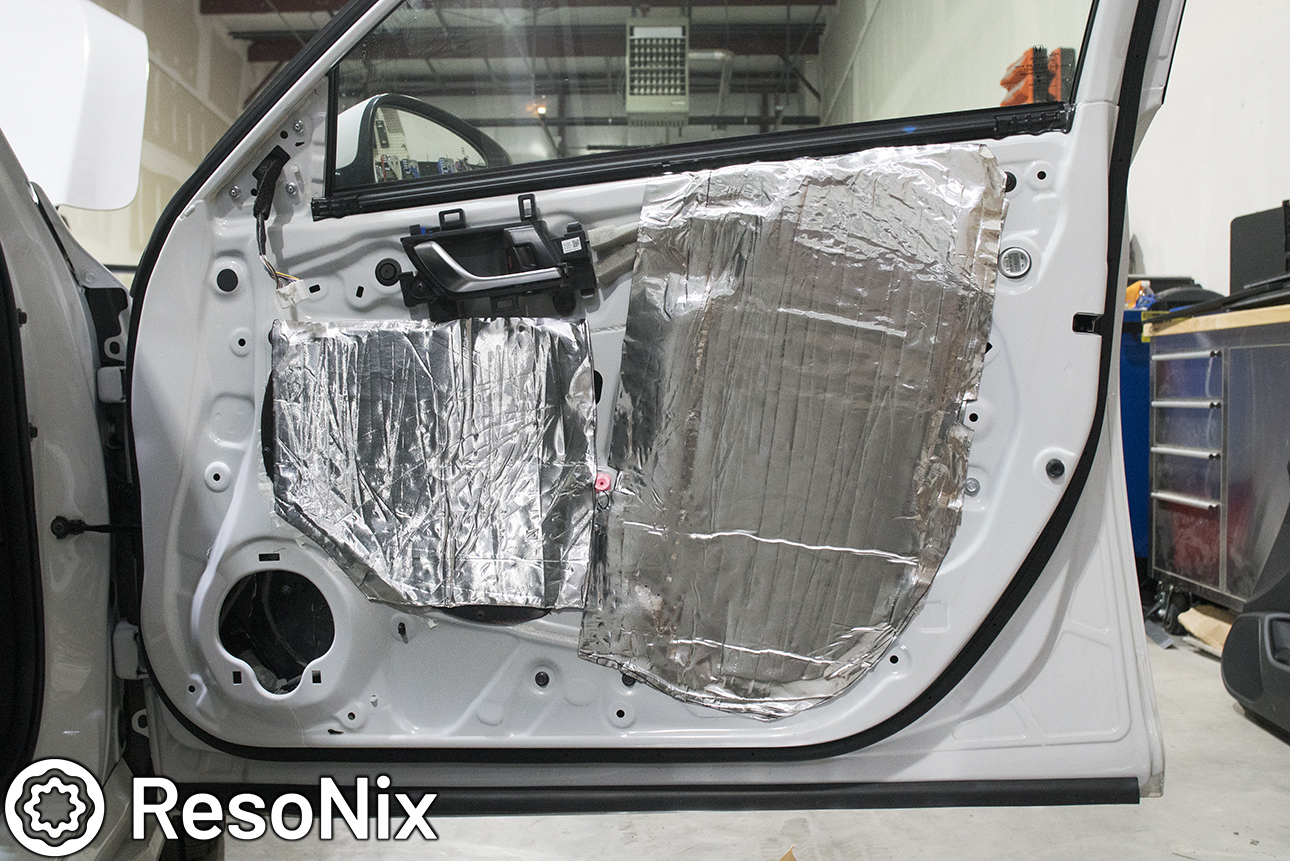
After they were sealed, they were fully covered with ResoNix Rectangles.
After treating the inner door skin with CLD, it’s time to apply our decoupler. We plan on offering two options for this. One is a closed cell foam, the other being a hydrophobic fiber mat. The closed cell foam will be a little better at decoupling if done correctly, but the fiber mat has two advantages. It kills two birds with one stone. It also acts as an absorber for high frequency noise, and you won’t need to be as meticulous when applying vs. CCF. Let’s start with the one basic rule of decoupling: 100% coverage. You will want total coverage of areas that are prone to panel on panel vibration. Doors, rear decks, trunk panels, etc. There are tons of spots that have the potential to buzz and rattle so its best to attack an area as a whole. With closed cell foam or any other decouplers, you can also spot-treat individual panels and clips. Door panels, rear decks, and pillar panels, for example, have multiple overlapping layers, clips, and other pieces that snap into place. Being meticulous with all of these areas will be beneficial in cutting down on rattles.
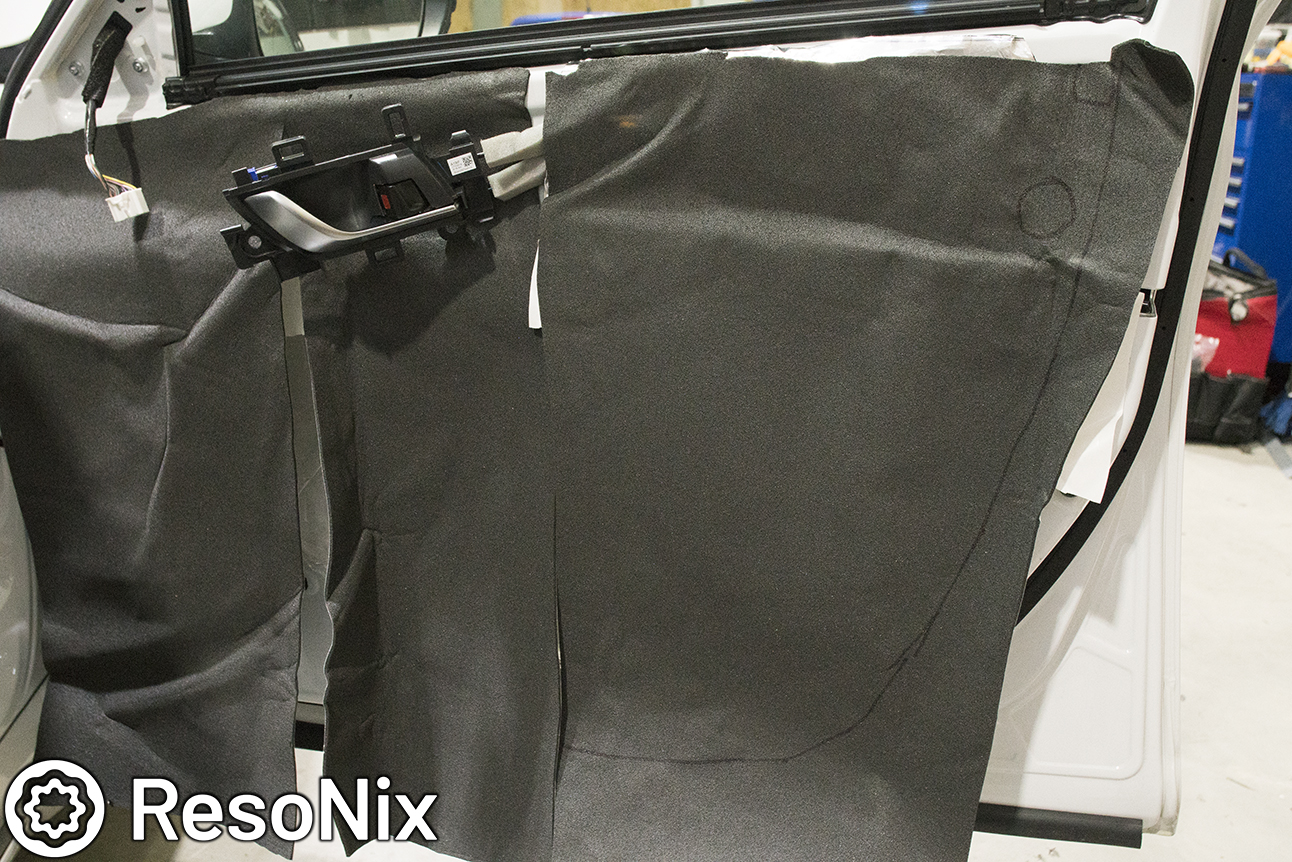
I personally usually split the door into 3 sections and hang the CCF sheet by adhering only a small strip across the top. While it hangs, I use a marker to draw out what needs to be cut out and removed.
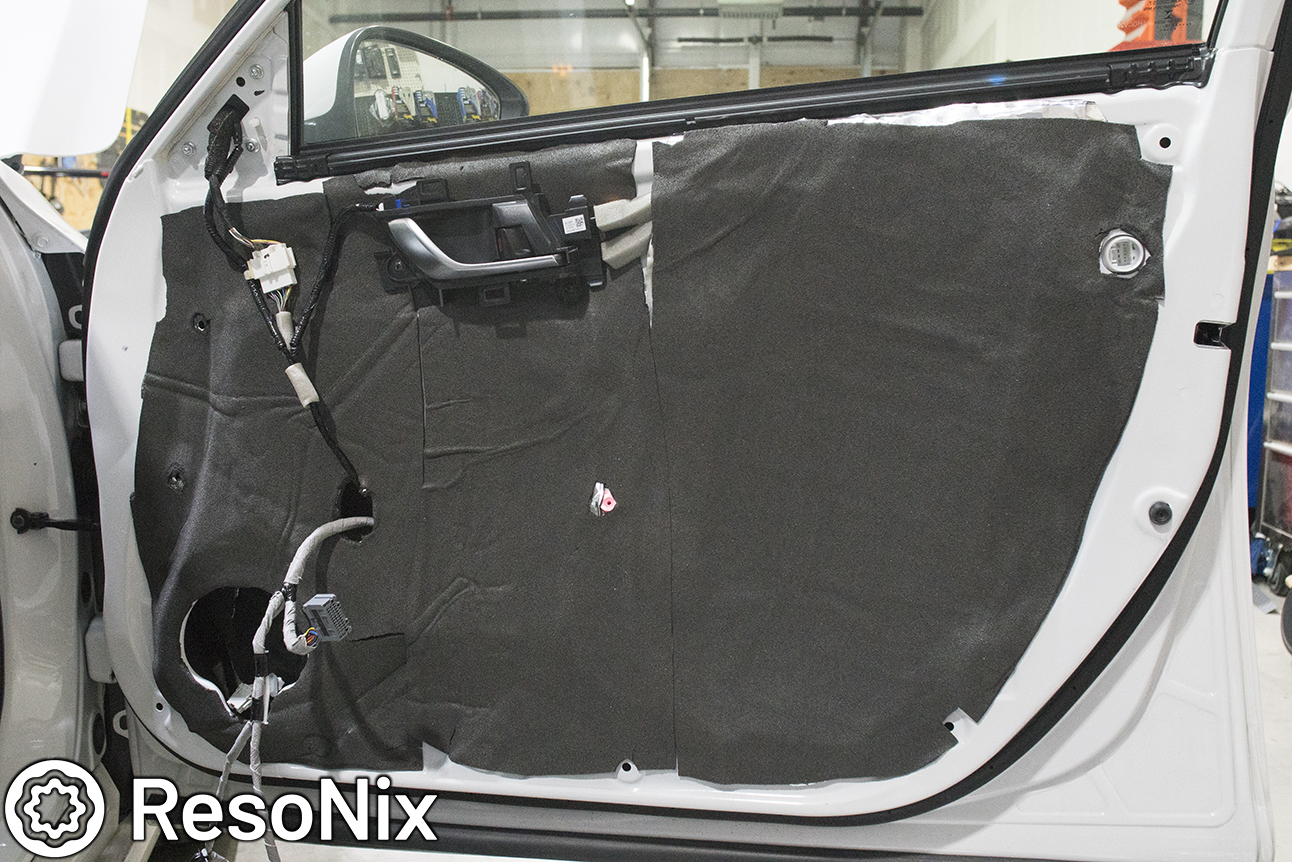
100% coverage with CCF.
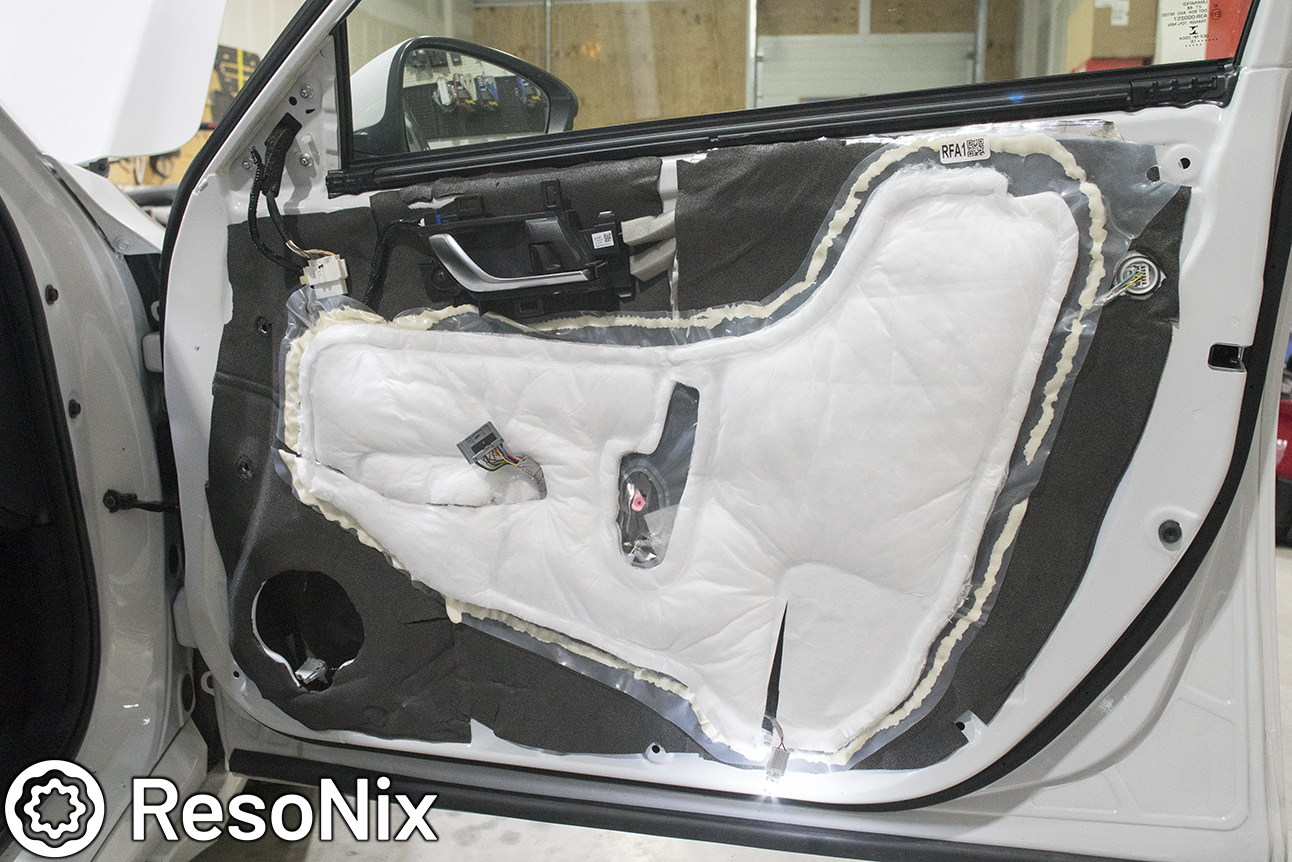
The cars OEM hydrophobic fiber mat re-installed
Next up is taking care of the door panels. This part is probably the trickiest, especially if you have door mounted midbass drivers. Every door panel is usually drastically different than the next, so it’s hard to give step by step instructions on what to do. What I like to do is break it down like I’m deadening a car. Are there any large flat surfaces? If so, scuff them up with rough sandpaper, clean it, and apply CLD. I highly suggest ResoNix Squares for the door panel, and remember, small pieces aren’t going to do much. Try to use larger pieces if possible. After you have targeted any areas that might be prone to resonance, focus on decoupling. As mentioned previously, door panels can be made up of multiple different layers and pieces. If these layers are easily separated and you can hear then vibrate against each other when you knock on the panel, you will want to spot-treat the area where they meet with closed cell foam or even butyl rope. It’s also a good idea to hold door panel clips into place with tesa tape or butyl rope to prevent them from vibrating against their housing.
Next up is taking care of the door panels. This part is probably the trickiest, especially if you have door mounted midbass drivers. Every door panel is usually drastically different than the next, so it’s hard to give step by step instructions on what to do. What I like to do is break it down like I’m deadening a car. Are there any large flat surfaces? If so, scuff them up with rough sandpaper, clean it, and apply CLD. I highly suggest ResoNix Squares for the door panel, and remember, small pieces aren’t going to do much. Try to use larger pieces if possible. After you have targeted any areas that might be prone to resonance, focus on decoupling. As mentioned previously, door panels can be made up of multiple different layers and pieces. If these layers are easily separated and you can hear then vibrate against each other when you knock on the panel, you will want to spot-treat the area where they meet with closed cell foam or even butyl rope. It’s also a good idea to hold door panel clips into place with tesa tape or butyl rope to prevent them from vibrating against their housing.
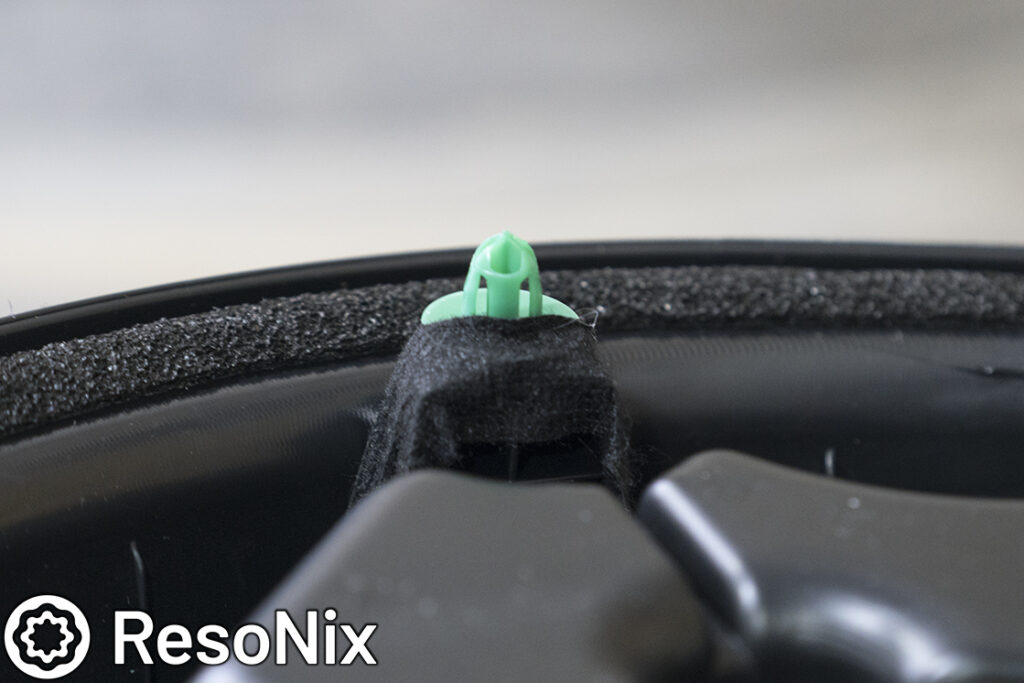
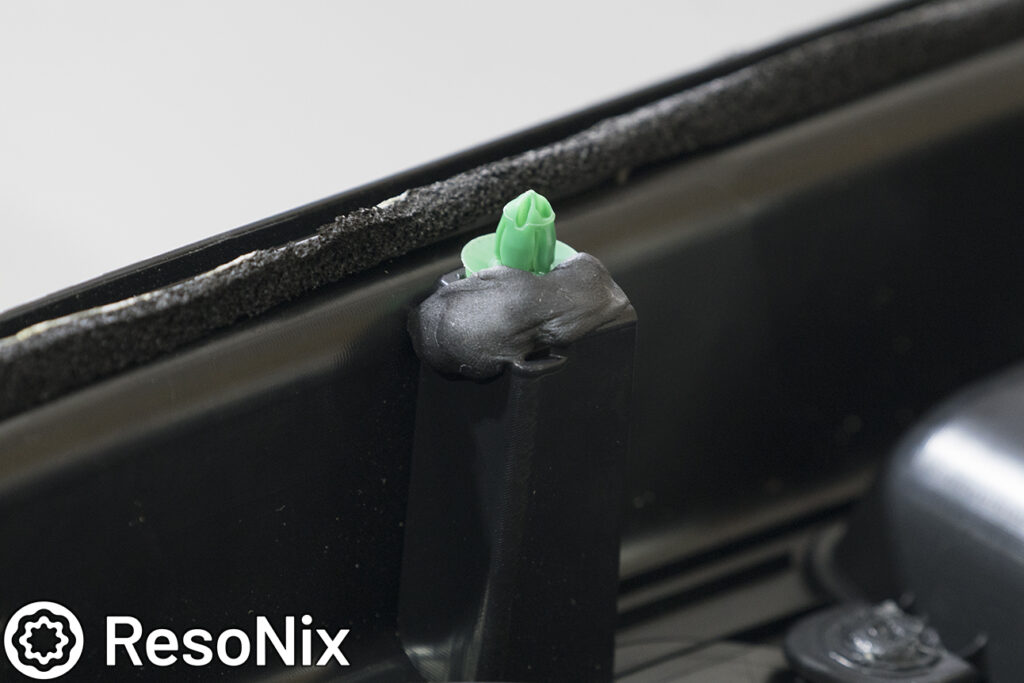
Installation Products
ResoNix is an automotive sound treatment company that offers top quality products which provide superior performance in their respective categories.
No gimmicks, no baseless claims, no nonsense. Constrained layer dampers, decouplers, and noise barriers are part of our soon to be released line-up
with a focus on data-backed, solutions-based
products developed by enthusiasts, for enthusiasts.
CONTACT
11 Holt Drive, suite 123,
Stony Point, NY 10980
info@resonixsoundsolutions.com
(845) 553-9500
Stony Point, NY 10980
info@resonixsoundsolutions.com
(845) 553-9500

CONTACT
LINKS
ResoNix is an automotive sound treatment company that offers top quality products which provide superior performance in their respective categories.
No gimmicks, no baseless claims, no nonsense. Constrained layer dampers, decouplers, and noise barriers are part of our soon to be released line-up
with a focus on data-backed, solutions-based
products developed by enthusiasts, for enthusiasts.
11 Holt Drive, suite 123,
Stony Point, NY 10980
info@resonixsoundsolutions.com
(845) 553-9500
Stony Point, NY 10980
info@resonixsoundsolutions.com
(845) 553-9500
Menu

